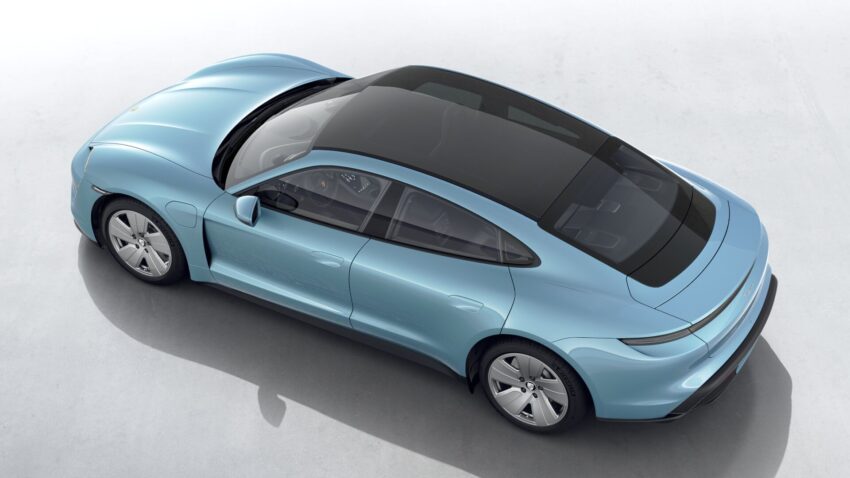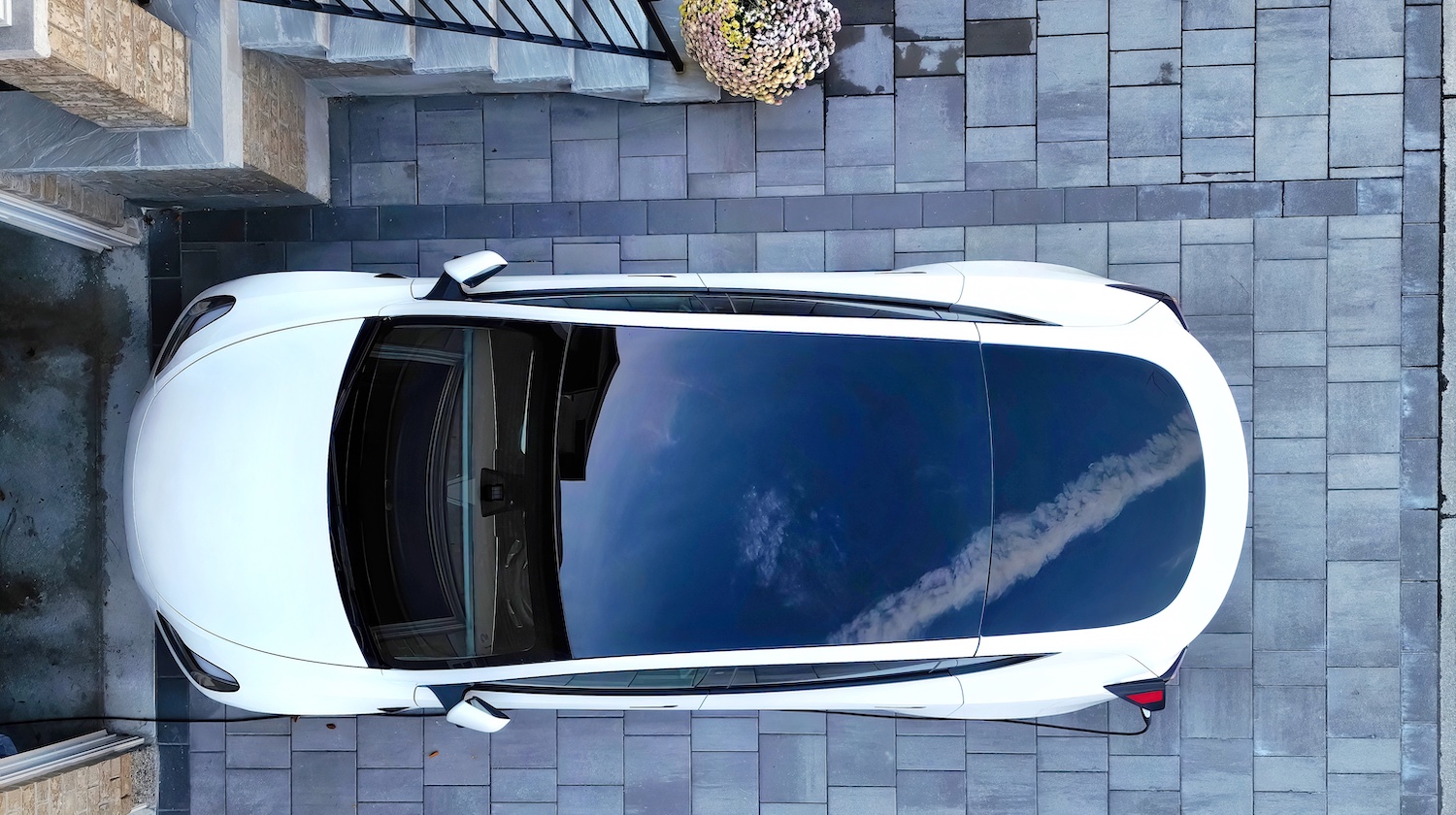The number one factor consumers cite when deciding which electric vehicle (EV) to purchase is driving range. But while car manufacturers focus on improving battery designs, tintable windows also extend the driving range of an electric vehicle. By controlling the amount of light passing through the vehicle window, drivers can realize a 10% increase in EV driving range.
Smart sunroofs change the level of tint in response to electricity. The driver can therefore dynamically tint the window with the press of a button. These windows offer greater comfort in changing weather conditions, while reducing the energy vehicles consume to increase the driving range for EVs.
The first generation of smart sunroofs are finally hitting the market after years of development. Porsche Taycan and Renault Solarbay are both examples currently in the market.

The Porsche Taycan comes with optional panoramic glass roof with variable light control. Image from: www.porsche.com
While these first gen smart windows diffract light, Miru is pioneering the use of electrochromic technologies that better control the sun’s heat. Miru is bringing to market electrochromic windows (“eWindows”), which have been proven on flat glass in large commercial buildings—making Miru the first to make curved eWindows for automobiles.
Miru eWindows can span large panoramic sunroofs without bisecting busbars, and use low voltage power to drive the switching. These features are important to both consumers and manufacturers, as automobiles are designed with increasingly more glass.
By using Miru eWindows to increase the driving range of electric vehicles, drivers can reduce CO<sub<2 emissions, enhancing the wellbeing of our people and our planet.
To learn more about Miru eWindows for automobiles, email contact@mirucorp.com.
